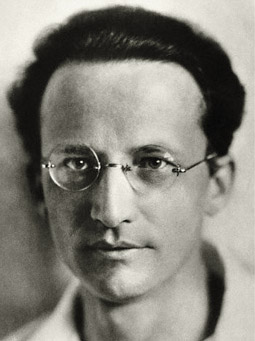Science Fiction and Fact

1926
Schrödinger's Wave Mechanics
Physicists are still puzzled by that strange now-a-particle,
now-a-wave nature of matter. But in 1926, Austrian physicist Erwin
Schrödinger derives an equation capable of explaining the
so-called "waveform" nature of matter. Through his equation,
Schrödinger describes how matter exists as a probability wave.
For example, an electron is a waveform that exists throughout all of
space, but there's a higher probability of finding it in some places
than in others. It's hard to believe, but the math works. Using the
Schrödinger Equation, physicists can explain many atomic-scale
mysteries—for instance, how electrons stay in orbit around the
nucleus of an atom.